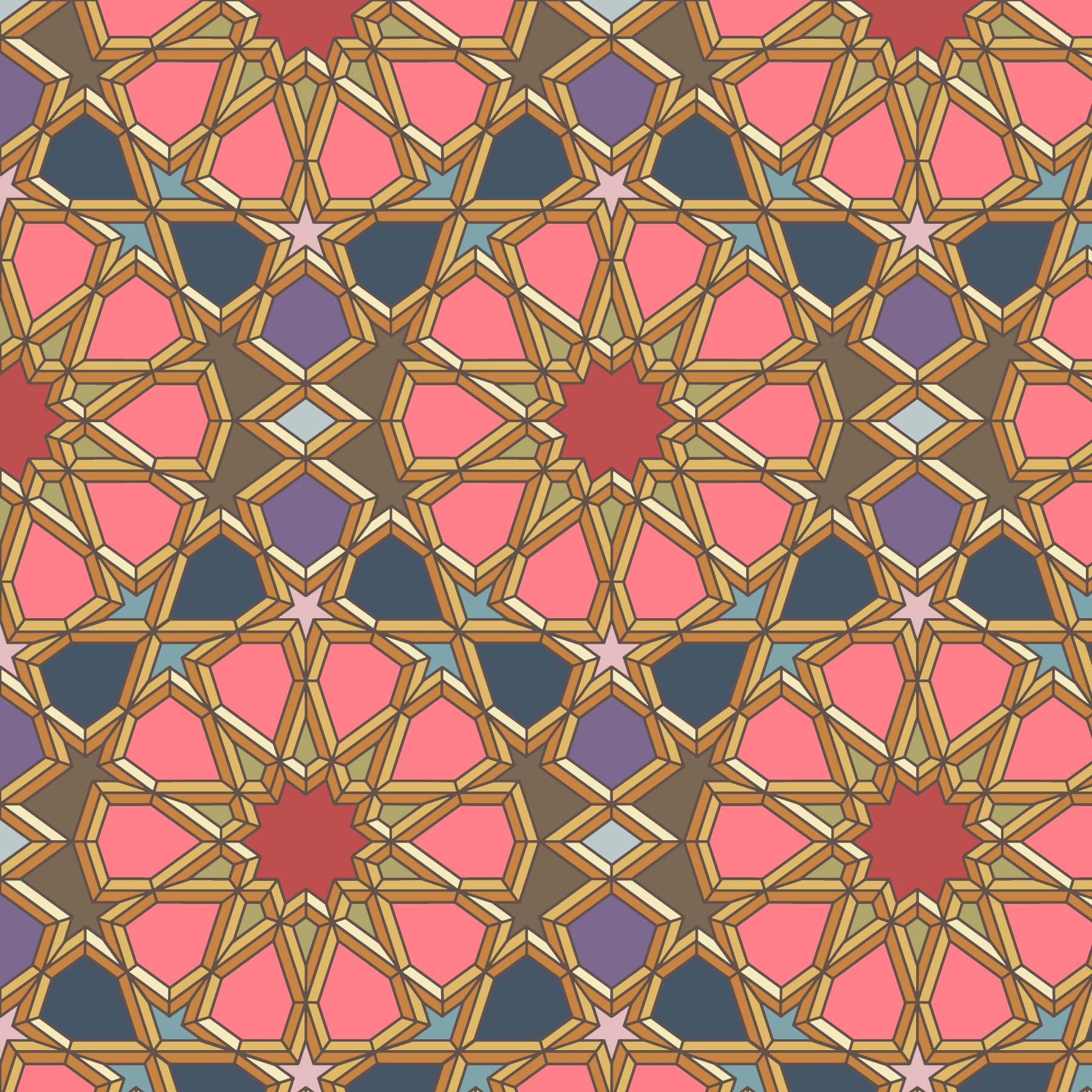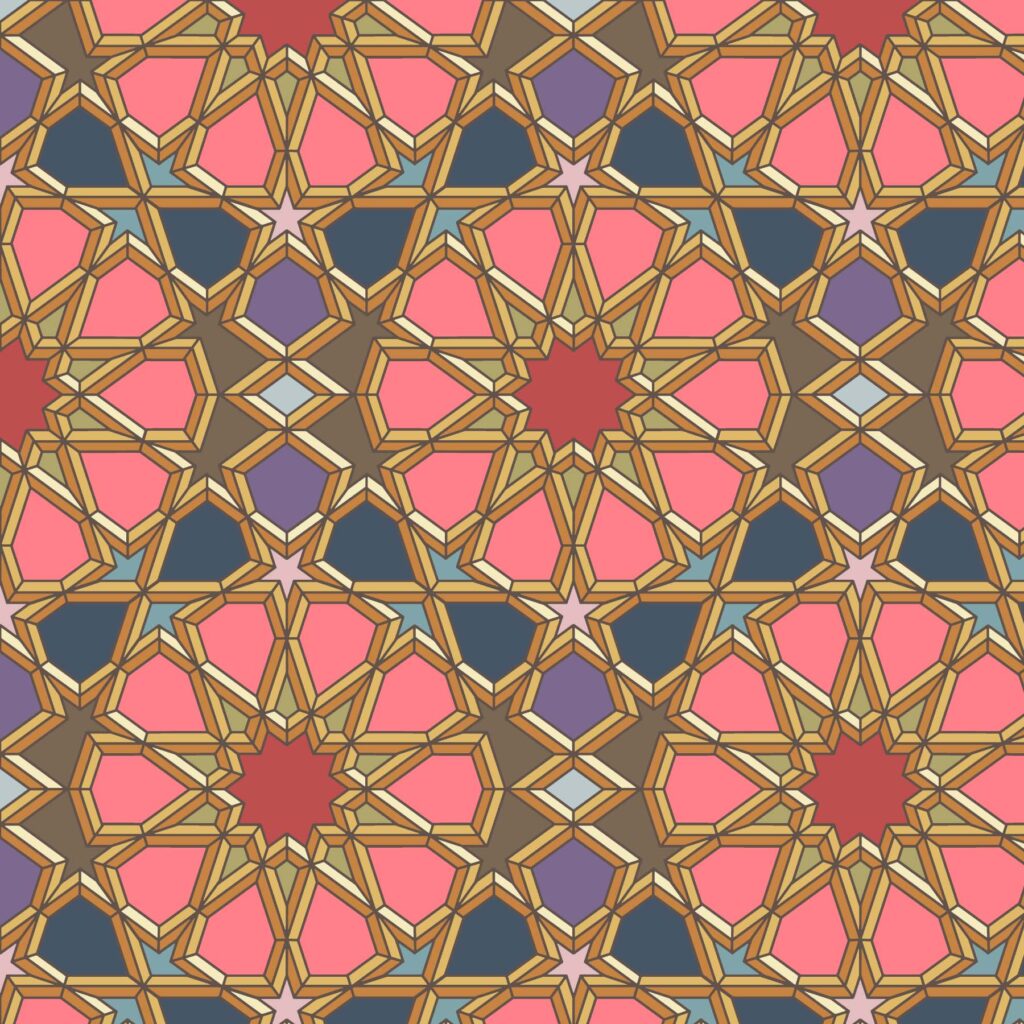Maximalist Design Aesthetic


Bijou Lattice Wallpaper in Rhubarb
Where other design styles exercise restraint, stick to neutral color palettes, or adhere to a particular era of history, maximalists play with elements from anywhere and everything. This can feel like opening the doorway to chaos, but some planning and basic design principles can help you to achieve a space that reflects your personality without clutter or chaos.
Read designer tips for Infusing Maximalist Vibes into Minimalist Spaces
Euclidean Star Watercolour Wallpaper in Regalita

The maximalist aesthetic is a design style characterized by an abundance of elements, patterns, colors, and textures. In contrast to minimalism, which embraces simplicity and a “less is more” philosophy, maximalism revels in excess and embraces a more-is-more approach to design. Here are key features of the maximalist aesthetic:
- Bold Colors: Maximalist spaces are often characterized by the use of rich, vibrant colors. Multiple bold hues may be used in various elements, from walls and furniture to accessories and textiles.
- Pattern Mixing: Maximalism celebrates the mixing and layering of different patterns and textures. Floral prints, geometric shapes, stripes, and intricate designs may coexist harmoniously in a maximalist space.
- Eclectic Furnishings: Maximalist interiors often feature a diverse range of furniture styles, shapes, and eras. Pieces may be ornate, oversized, or uniquely designed, contributing to the eclectic and layered look.
- Art and Decor Collections: Walls in maximalist spaces are adorned with an abundance of art, photographs, and decorative items. Collections of various objects, from vintage finds to contemporary art, create a visually stimulating environment.
- Luxurious Fabrics: Plush fabrics, such as velvet, silk, and faux fur, are commonly used in maximalist design. These textiles add a sense of luxury and opulence to the space.
- Statement Pieces: Maximalist interiors often feature statement furniture or decor pieces that draw attention and become focal points. These pieces may have intricate details, unique shapes, or vibrant colors.
- Over-the-Top Decor: Maximalism embraces a sense of drama and theatricality. Large chandeliers, ornate mirrors, and decorative wall moldings contribute to the overall opulent feel.
- Personalization: Maximalist spaces are often reflective of the owner’s personality and interests. Personalized items, travel souvenirs, and sentimental objects are integrated into the design, adding a layer of individuality.
- Layered Textures: The maximalist aesthetic incorporates a variety of textures, from smooth and shiny to rough and matte. This layering of textures adds depth and visual interest to the overall design.
- No Empty Spaces: Unlike minimalism, where empty spaces are valued, maximalism fills every nook and cranny with decor and furnishings. The goal is to create a visually rich and stimulating environment.
Maximalism is a bold and expressive design style that encourages creativity, self-expression, and a departure from conventional design norms. It’s a style that embraces diversity and encourages individuals to surround themselves with things they love, creating a visually dynamic and immersive living space.
Be the first to comment